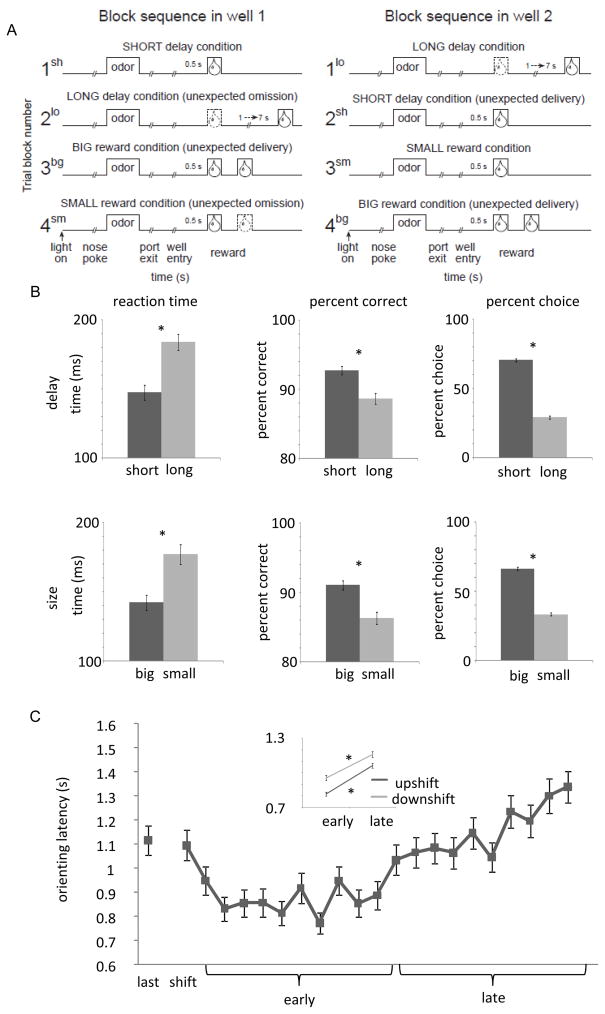Figure 1.
Behavioral performance during recording in CeA. A. Choice task block sequence. In the beginning of the session reward available at one well was presented at a short delay (500 ms) and the other well after a long delay (1–7 s) (counterbalanced across days). In block two, reward contingencies were switched, such that the well that was previously short delay becomes long, resulting in a surprising omission of expected reward at 500 ms (downshift, 2lo). Concurrently, a surprising reward delivery occurs at the well that was previously associated with long delay that is now designated as short delay (upshift, 2sh). In the third block delay to reward is held constant and reward size is manipulated. Importantly, while big reward (one bolus at 500 ms and another at 1 s) is surprisingly better than delayed reward (one bolus at 1–7 s) (upshift, 3bg), small reward (one bolus at 500 ms) is identical to reward delivered at a short delay (one bolus at 500 ms; no shift). In the fourth block the size contingencies are switched, such that small reward becomes big (upshift, 4bg) and big becomes small (downshift, 4sm). B. Behavior during choice task performance in recording sessions. (Top) Impact of delay length on reaction time (left) and percent correct (center) during forced trials, and percent choice (right) during free choice trials. (Bottom) Impact of reward size on reaction time (left) and percent correct (center) during forced trials, and percent choice (right) during free choice trials. C. Impact of surprising value shifts (2sh/lo, 3bg/sm, 4bg/sm)) on orienting latency during recording sessions. ‘Last’ indicates the last trial of the previous block. ‘Shift’ indicates the first trial in a block just before the rats have experienced a value shift. Inset shows change in orienting latencies across shift blocks as rats learn about upshifts and downshifts in reward value. Error bars represent standard error of the mean.

